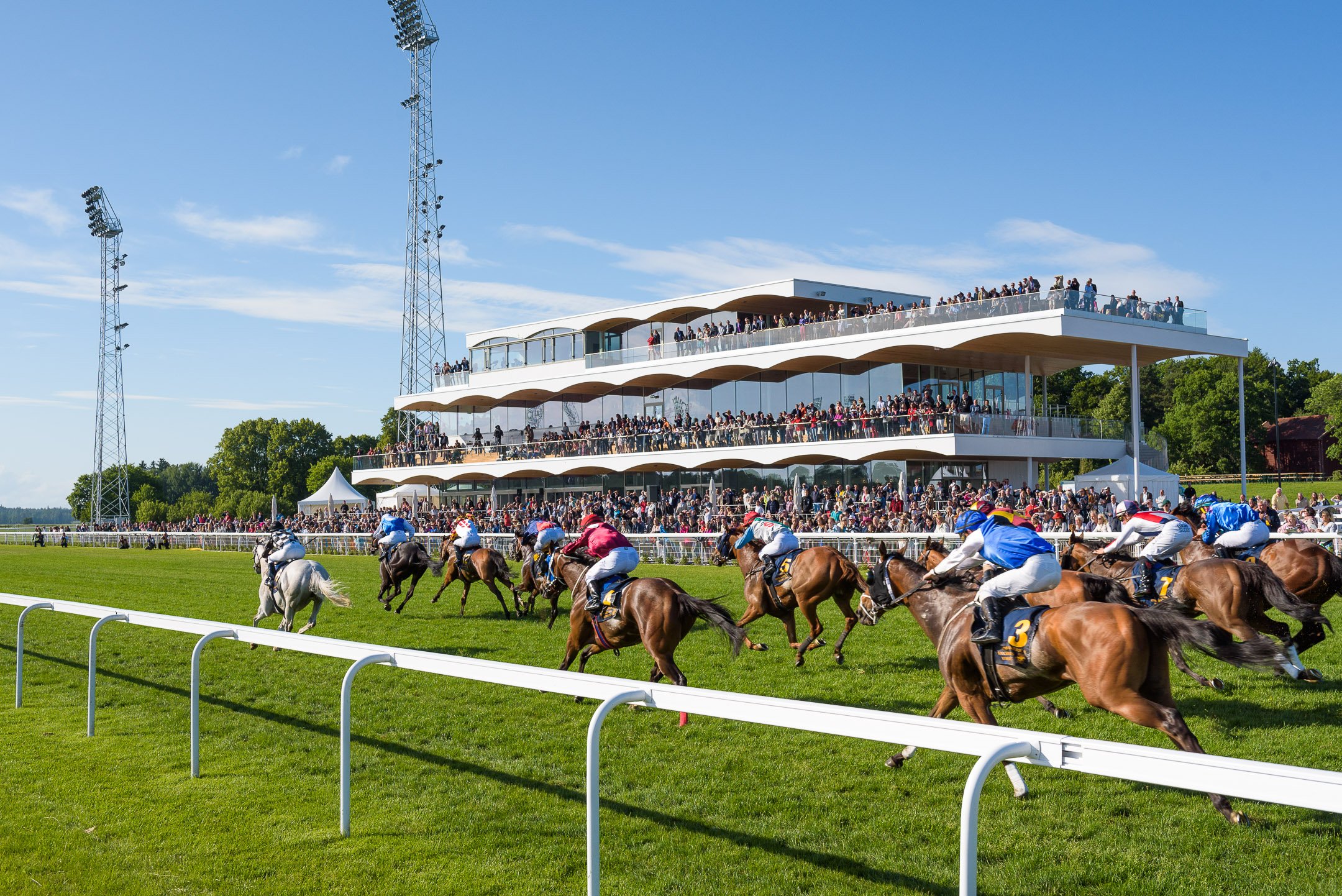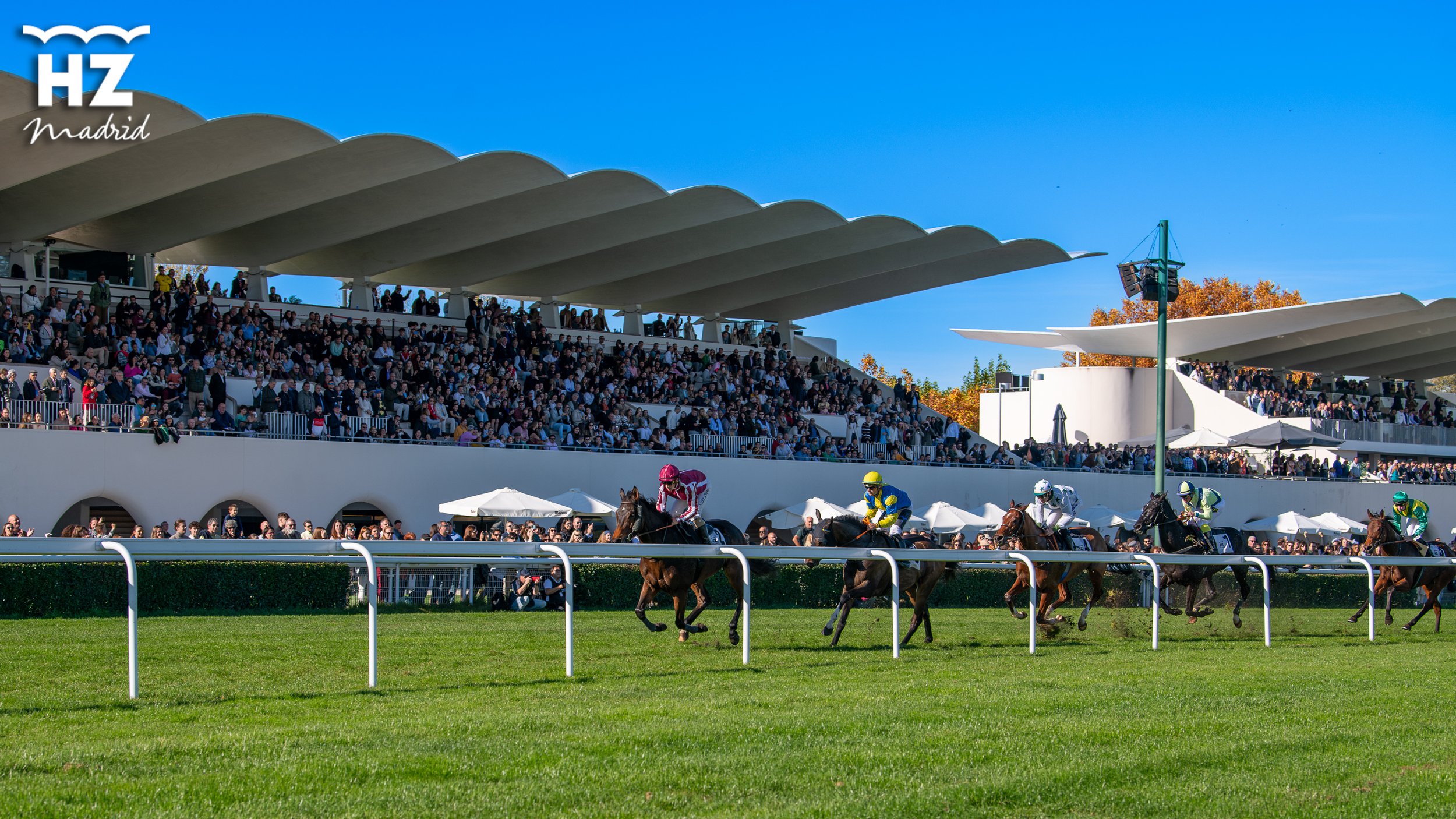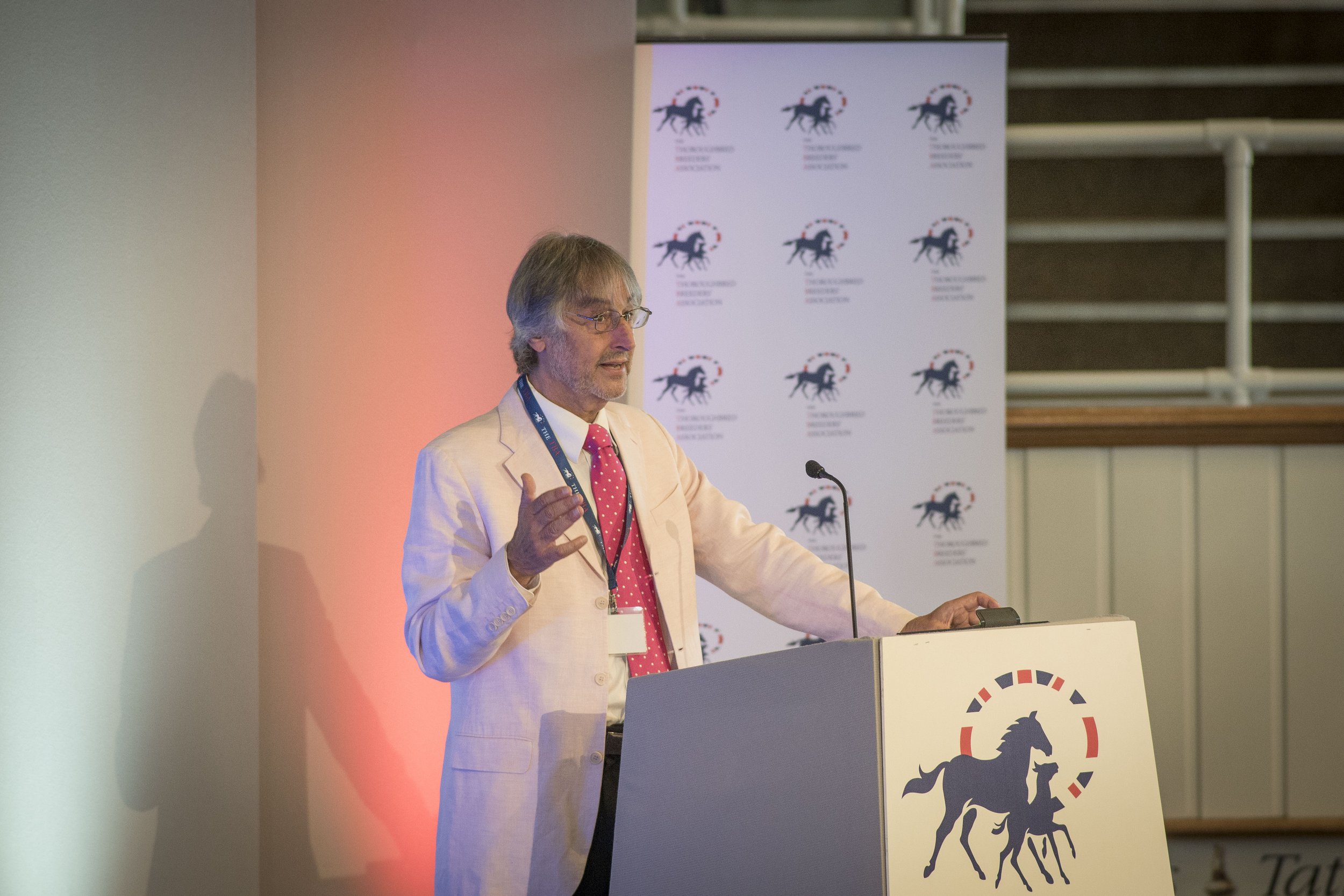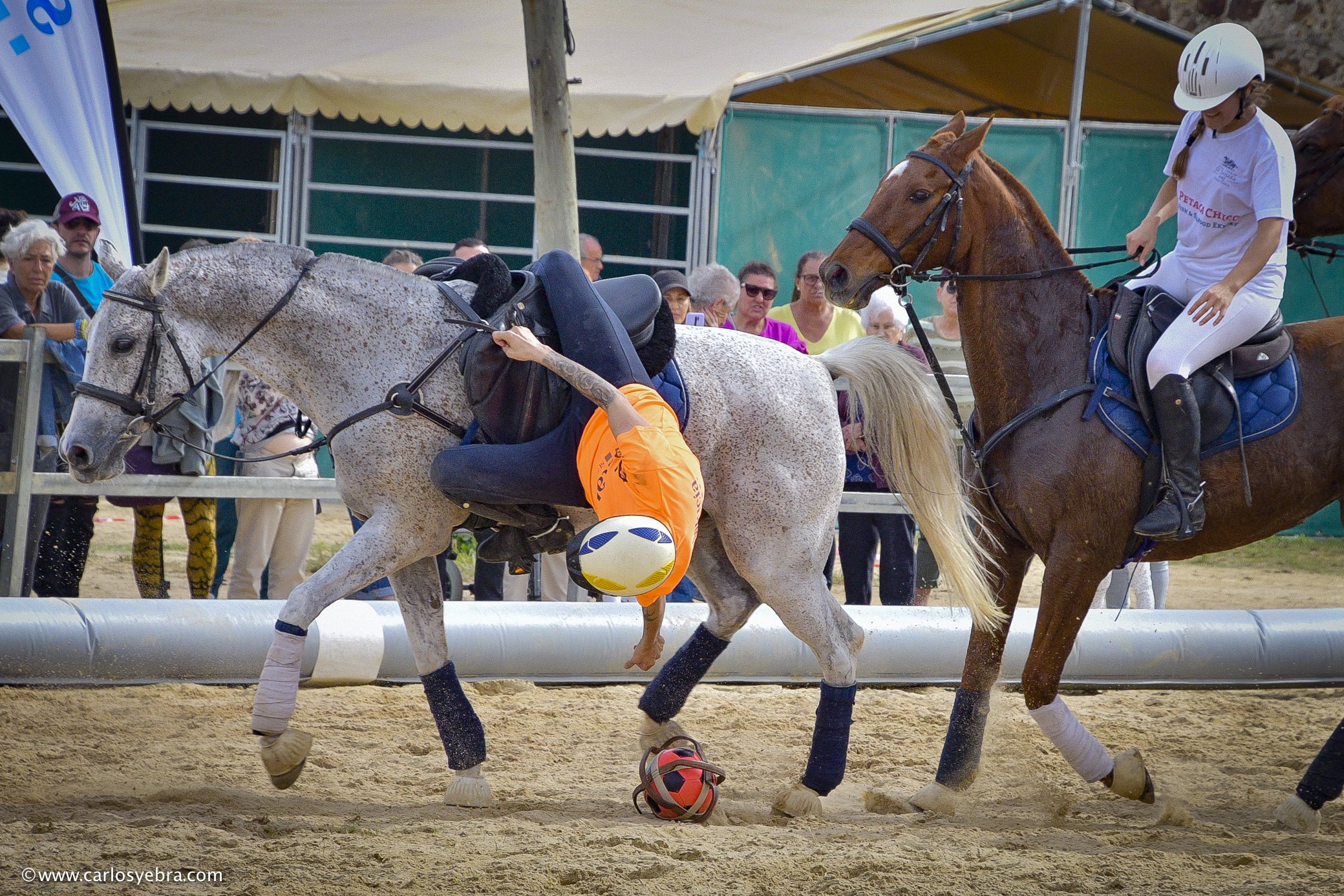The different incentives available across Europe this summer for those in search of prize money and black type success!
/Article by Lissa Oliver
In February, the European Pattern Committee (EPC) announced changes to the 2024 European programme of Flat Black-Type races. The EPC sanctioned a total of 826 Black-Type races (838 in 2023), comprising 416 Group races (418 in 2023) and 410 Listed races (420 in 2023). Five Pattern races have been downgraded in 2024, with a further 11 Listed races losing that status.
Jason Morris, Chair of the EPC, explained, “This year will see another contraction in the number of Pattern and Listed races to be staged throughout Europe, with the total number having declined from 852 races in 2022 to 826 in 2024. The European Pattern Committee continues to enforce the most stringent international quality control measures so that the racing and breeding industries can have the utmost confidence in the quality of European Black Type.”
This leaves trainers rethinking traditional routes to Black Type, but at the same time adding new avenues, some of which could lead to some interesting destinations. The EPC approved an application from Denmark to stage a new Black Type race in 2024, with the Golden Mile at Klampenborg over 1600m (8f) for three-years-olds and upwards in May being upgraded to Listed status and carrying a purse of €46,749 (£40,000).
In Ireland, the Salsabil Stakes, a 2000m (10f) race for three-year-old fillies at Navan in April, has been upgraded from Listed to Group 3. Ireland will also stage a new Listed race for three-year-olds over 2400m (12f) at Gowran Park 27th July, the Marble City Stakes worth €46,749 (£40,000).
Flagship races in Poland and Spain
Although no new Listed race applications have been received from emerging racing nations, the EPC noted the strong first Listed edition of the Wielka Warszawska in Poland in 2023. Run over 2600m (13f) at Sluzewiec Racecourse 6th October, for three-year-olds up, it carries a prize of €111,138 (£95,092).
The €85,000 (£72,728) Gran Premio de Madrid in Spain also continues to perform well after being allocated Listed status by the EPC in 2022. It’s run at Madrid over 2500m (12.5f) 22nd June for three-year-olds up.
These were created through the recent Flagship Race scheme by the European and Mediterranean Horseracing Federation (EMHF) and EPC, allowing countries with no Black Type races to apply for a single Flagship race which qualifies for Black Type at a lower rating level. This provides horses with a slightly easier Black Type opportunity, by 2.2kg (5lbs). It also opens up new and often interesting destinations for owners and team.
Morocco
Dr Paull Khan, Secretary-General of the EMHF, explains, “The quality control that is applied to European Black Type is the most stringent in the world. This is good, of course, because everyone recognises the strength of European Group and Listed races. But, on the other hand, countries with less-rich racing industries have long found it hard to establish races which attract the necessary quality of runners to qualify for Black Type. Essentially, for most race types, the average ratings of the first four finishers must be at least 100. Two years ago, the EMHF and EPC devised the Flagship Race scheme, under which countries with no Black Type races can apply for a single Flagship race to be given Black Type based on average ratings of the first four finishers being 5lbs lower than would normally be the case. In simple terms, this means that trainers with horses up to 5lbs shy of normal Listed Race standard stand a reasonable chance of attaining black type when targeted at these races.
“There is a ripple effect which is of benefit to trainers,” Dr Khan points out. ”Other countries are looking to join the party, and in order to attract the necessary quality of entries - particularly from abroad – are ploughing money into their candidate races, and are often offering attractive travel incentives, too. Even if these races have not yet attained their Black Type status, they can still be immensely attractive propositions.”
Top of the list in this respect is Morocco’s Grand Prix de la Sorec. The 10th renewal of the Morocco International meeting will be held on the weekend of 16th and 17th November 2024 at the Casablanca-Anfa racecourse, a dirt track. This prestigious 14-race meeting plays a major role in promoting the Moroccan horseracing industry internationally and includes eight international races worth €1m in total. Sunday is devoted to Purebred Arabians, with over €500,000 in prize money for the four Black Type races.
Saturday is an all-thoroughbred card and of interest here is the feature €123,000 Grand Prix de la Sorec, 2400m (12f) for three-year-olds up. Entry is €600 by 31st October, free to declare. Also on the card is the €71,600 Grand Prix des Eleveurs for three-year-old fillies, over 1750m (8.75f) and the €61,600 Grand Prix des Proprietaires for three-year-old colts, over 1900m (9.5f). Casablanca-Anfa racecourse provides a children's area, entertainment and excellent facilities for visiting owners and trainers. The Cité du Cheval is the 87-hectare training centre on the outskirts of Casablanca, 15 minutes from Casablanca airport and 30 minutes from the racecourse, with 400 boxes, several training tracks, a farriery centre, two restaurants and a housing and catering area for staff.
International runners will have their flights, via the BBA, paid for, or up to €3,000 toward overland transport. Flights, hotel accommodation and all transfers are provided for two owners, the trainer and guest, and the jockey. Hospitality includes lunch at the racecourse on both days and dinner at the Gala Evening on Saturday.
As Dr Khan points out, “Another factor here is the ‘racing tourism’ element. The exotic location of these races provides an additional appeal for owners and trainers who want to soak up the fantastic experience of racing in different cultures.”
Turkey
Turkey and its International festival on the first weekend of September at Veliefendi Racetrack, Istanbul, has for long been a popular destination, particularly for British trainers. Since Brexit, however, the issues involving a Third Country have deterred British runners, leaving the races more open for other European runners. What is instead happening is that two valuable €240,000 (£208,000) Group races have been wholly contested by locally-trained horses, the 2023 Bosphorus Cup attracting just five runners.
The International Bosphorus Cup has this year been downgraded to Group 3, but remains an attractive proposition. Run on turf over 2400m (12f), the €240,000 (£208,000) race is open to three-year-olds up. With the same prize money, the 1600m (8f) International Topkapi Trophy is another Group 3 for three-year-olds up that last year attracted no foreign runners. And the same applies to the fillies only Group 3 International Istanbul Trophy over 1600m (8f), worth €127,000 (£108,645).
Entry for the International meeting is by 2nd August, and a very generous travel subsidy is available to foreign runners, including $18,000 to horses arriving from the continents of America (North and South), Oceania, Africa and Far East countries. Up to €12,000 is available to European and UAE runners.
Sweden and Norway
Sweden’s 500-acre Bro Park has permanent stabling and training facilities, just over 30 minutes from the centre of Stockholm by car and a similar distance from Arlanda Airport. The two main international days are the Stockholm Cup day 15th September and the Stockholm Stora day 9th June, both branded as Super Sunday, during which the local 1000 and 2000 Guineas are also run. Run on turf at Bro Park, the Group 3 Stockholm Stora Pris is run over 1750m (8.75f) and worth €88,817 (£75,992), with a strong supporting card of the €29,309 (£25,000) Listed Bro Park Varsprint over 1200m (6f) and Listed Bloomers’ Vase 1600m (8f) for fillies, carrying the same value.
The Group 3 Stockholm Cup International over 2400m (12f) on turf carries prize money of €124,343 (£106,380) and the three supporting races each offer €58,619 (£50,151); the Listed Tattersalls Nickes Minneslöpning 1600m (8f) run on dirt, the Listed Bro Park Sprint Championship 1200m (6f) on turf, and the Listed Lanwades Stud Stakes 1600m (8f) on turf for fillies. Lanwades Stud also generously offers a free nomination to one of its stallions to the winner. The card also includes a 1400m (7f) two-year-old race on turf worth €36,859 (£31,534), the Svealandlopning. The other mentioned races are for three-year-olds up.
There are also interesting opportunities in Norway on Norsk Derby day 25th August at Oslo, as Director of Racing Liv Kristiansen tells us. ”Oslo offers a great range of both historic and modern hotels and restaurants and makes for a great long weekend with the Derby Day as a finale. The racecourse is just a 15-minute drive from the city centre and is home to most of the racehorses in Norway. On the day, there will be many runners from Denmark and Sweden as well.”
Kristiansen reminds us that it is prohibited to use the whip throughout all of Scandinavia, and in Norway jockeys are not allowed to carry a whip in races for three-year olds and older.
Germany
As an accompaniment to the familiar Pattern races in Germany, Deutscher Galopp Director of Racing Rüdiger Schmanns tells us, ”in general all races are open for foreign trained horses, even handicaps if the horses have a rating in the home country. We have good prize money options in handicaps on the so-called Premium Race Meetings, which are meetings on Sundays or Bank Holidays with at least a Group race on offer on that day. Handicaps of the best category are in total value of €20,000 (£17,103), the second best of €15,000 (£12,827), the third best of €10,000 (£8,551), and the lowest category of €8,000 (£6,841). At the Baden-Baden meetings there is usually one handicap of the day with higher prize money and in Bad Harzburg we have the so-called Super-Handicaps with exceptional prize money in the different categories, but they have an early closing stage at the beginning of April. Average prize money is the highest ever on offer in Germany at €14,200 (£12,143).”
France
Handicaps should also be on the radar in France, where France Galop is contributing heavily in the relaunch of the Quinté+ bet. As a result, the 13 Major Handicaps programme has been remodelled to restore appeal. Four Super Handicaps are now worth €100,000 (£85,519) and eight more have increased in value to €75,000 (£64139), with maximum runners raised to 20. The four €100,000 Super Handicaps cannot be on a Group 1 card and will be run on 7th April at ParisLongchamp 1400m (7f) four-year-olds up; 5th May ParisLongchamp 2000m (10f) four-year-olds up; 4th August Deauville 1600m (8f) three-year-olds up; and 8th September ParisLongchamp 1850m (9f) three-year-olds up.
The dates of the €75,000 Grands Handicaps, with a maximum of 18 runners, are 2nd June Chantilly 2400m (12f) four-year-olds up; 16th June Chantilly 1800m (9f) four-year-olds up; 15th August Deauville 1200m (6f) three-year-olds up; 18th August Deauville 1900m (9.5f) three-year-olds up; 5 October ParisLongchamp 1600m (8f) three-year-olds up; 5th October ParisLongchamp 2500m 12.5f) three-year-olds up; 6th October ParisLongchamp 1300m (6.5f) three-year-olds up; 6th October ParisLongchamp 2000m (10f) three-year-olds up.
Another shake-up comes in the reduction of entry fees for Group 1 races to revitalise entries, introducing a uniform entry price of 0.65% of prize value, with the exception of the Qatar Prix de l’Arc de Triomphe and the Classic races. This lowers the entry fees for 15 Group 1 races, out of a total of 21. Trainers should note that entries have also been brought forward to earlier dates, now four weeks prior to the race.
Ireland
Horse Racing Ireland confirmed a record 395 fixtures for 2024, with an increase of €1.3m (£1.1m) in prize money, creating additional opportunities for horses at all levels. In addition, the final €1.4m (£1.2m) in capital schemes will be paid out for stableyard expansions (€0.3m) and racetrack and industry facility improvements (€1.1m), making it a more attractive proposal for visiting horses and team.
HRI, the Irish EBF and Gowran Park Racecourse have announced a significant boost to the three-year-old programme for middle-distance horses with a new Spring Series of median sires races, culminating in the €200,000 (£170,980) Irish Stallion Farms EBF Gowran Classic, 2000m (10f), the richest race ever held at the County Kilkenny course, on Bank Holiday Monday 3rd June. The race is designed to attract three-year-old middle-distance horses with a median price of no more than €75,000 (£64,121). The winner will receive an automatic free entry into the Dubai Duty Free Irish Derby at the Curragh on 30th June.
The series, with total prize money of €330,000 (£282,125), will consist of six races with a minimum prize-fund of €25,000 (£21,373) per race. The Curragh, Navan and Cork will host four maiden races between them, two for fillies only, and each of these races will be restricted to runners whose sires achieved a median price of not more than €50,000 (£42,747) in 2022.
A median price of €75,000 (£64,121) will apply to runners in The Irish Stallions Farms EBF three-year-old Spring Series Race, with a value of €30,000 (£25,647) at Roscommon on 13 May. The same median price restriction will apply to runners in the €200,000 series Finale.
Racecourse Manager Eddie Scally says, “Gowran Park are really excited to host the inaugural €200,000 Irish Stallion Farms EBF Gowran Classic, the region’s richest Flat race. This race will form part of an action-packed day both on and off the track with live music and a massive family fun day. We hope the Gowran Classic will attract all the top trainers and riders from both Ireland and abroad and see for themselves the warm Kilkenny welcome.”
Irish Stallion Farms EBF already sponsor two successful series for two-year-olds, the auction and median series with 27 races in each and a combined value of nearly €850,000 (£726,712). ”We felt it important to develop a similar series for later developing middle-distance three-year-olds,” says Irish EBF Chairman Joe Foley, ”hence the Spring Series was initiated with the Gowran Classic as its centrepiece. We look forward to seeing this three-year-old series grow and develop and are delighted to support Gowran Park racecourse in particular, who are investing heavily in their facilities.”
Curragh-based trainer Willie McCreery points out, “These races are designed to be linked to the median price of the stallion, which allows everyone to participate. It offers great opportunities for middle-distance horses that needed a bit of time to mature and gives them a big target to aim at. The prize money along with the ‘win and you’re in’ to the Dubai Duty Free Irish Derby is a super incentive.”
The new series consists of the 2000m (10f) €25,000 3yo Median Auction Maiden (Fillies) at the Curragh 6th April; 2000m (10f) €25,000 3yo Median Auction Maiden at Navan 9th April; the 2000m (10f) €25,000 3yo Median Auction Maiden at Navan 27th April; the 2000m (10f) €25,000 3yo Median Auction Maiden (Fillies) at Cork 10th May; the 2000m (10f) €30,000 3yo Median Auction Winners of 1 at Roscommon 30th May; and the Gowran Classic.
If tourism is the agenda, don’t forget Ireland’s only beach race meeting at Laytown, a small seaside resort just 46km (29 miles) from Dublin. The six-race card at Laytown races is held Monday 16th September 2024 with an average of €7,000 (£6,000) to the winner.
Britain
Last year saw the introduction of high value developmental races in Britain, a scheme the BHA has expanded for 2024. From 63, there are now 84 developmental races for the Flat season worth over €3.5m (£3m) in total prize money. The initiative has been made possible by British Stallion Studs (EBF), Juddmonte, Darley and Tattersalls, as well as the BHA Development Fund and is aimed at supporting the domestic breeding industry and encouraging the purchase of young talent in Britain. The races offer enhanced prize money to horses embarking on the early stages of their racing careers.
Richard Wayman, Chief Operating Officer of the BHA, explains, “These races play a hugely important role within the race programme and yet, historically, it is an area where prize money has been behind our international competitors. It is essential that steps are taken to retain quality horses on our shores and with over 80 of these races scheduled for the coming season, this is one initiative that we believe will support this broader aim.”
The 2024 programme began with the Brocklesby Stakes at Doncaster on the opening day of the 2024 Turf season, one of 60 such races for two-year-olds. It comprises 32 Open Novice/Maiden races for two-year-olds, worth a minimum of €46,789 (£40,000); 29 Restricted Novice/Maiden races for two-year-olds, worth a minimum of €35,091 (£30,000); and 23 Open Novice/Maiden races for three-year-olds up, worth a minimum of €46,789 (£40,000).
“British Stallion Studs (EBF) are delighted to be a leading sponsor of the 2024 High Value Developmental Race programme, with a contribution of over €380,172 (£325,000), covering more than 30 races,” says Simon Sweeting, Chairman of British Stallion Studs (EBF). “One of the unique features of our prize money contributions is to encourage racecourses to ‘match-fund’; it is wonderful to see the model we pioneered and embedded, replicated by our fellow sponsors in these races.”
The EBF remains the leading sponsor of European racing and Kerry Murphy, European Breeders Fund CEO, points out, ”The EBF was set up over 40 years ago primarily to tackle the threat of less prize money in two-year-old maidens. With £3.5m total prize money and over 80 high value two-year-old and three-year-old races worth at least £30,000 from the end of March to October, there will be opportunities for all types. It is a great credit to all involved and, of course, all the British stallion farms that contribute to the EBF, and I hope will give owners and purchasers at the yearling sales plenty of incentives.”
The full race list can be seen at:
https://ebfstallions.com/wp-content/uploads/2012/11/2024-Development-Race-List-public.pdf
A 20-minute drive from Stansted Airport, Chelmsford City offers some tempting opportunities for runners from abroad. Not least is the Cardinal Condition Stakes on Saturday 6th April, a Class 2 race that is the last stop of the European Road to The Kentucky Derby, a “win and you’re in”. Run over a mile (1600m) and restricted to three-year-olds, the race is worth £100,000 (€116,953), with the winning horse receiving 30 points, ensuring a place at Churchill Downs. Second through to fifth place receive 12, 9, 6 and 3 points respectively.
“Last year Bold Act won for Charlie Appleby and he has since won a Grade 3 at Keeneland. The runner-up was the Archie Watson-trained Brave Emperor, who had won twice here as a two-year-old and he followed up with a Group 3 win in Germany next time out. Brave Emperor has since added three more Group wins and has just won the Irish Thoroughbred Marketing Cup, a local Group 2, at Doha. We are hopeful of seeing the Cardinal Condition Stakes upgraded to Listed status for next year, given the strength of the race,” says Neil Graham, Chelmsford City Racing Director.
Another imminent upgrade to hope for is the currently Listed Queen Charlotte Stakes over 7f (1400m) for fillies four-year-olds and up, run on Sunday 7th July, with prize money of £100,000 (€116,953). Graham points out, “Past winners include One Thousand Guineas heroine Billesdon Brook, Group 1 winner Highfield Princess and Soft Whisper, a subsequent Group 2 winner in Meydan. It comes a month before the Oak Tree Stakes at Goodwood and is good stepping stone, as Billesdon Brook showed. It is also Britain’s second-most valuable Listed race, behind only the Chesham Stakes at Royal Ascot.”
The third of Chelmsford City’s feature races is the £80,000 (€93,595) Listed Chelmer Fillies Stakes over 6f (1200m) for three-year-old fillies, run Thursday 2nd May. “It’s a good option for the non-stayers and it’s a race that builds on quality year on year. Last year it was won by George Boughey’s Believing, who won a Group 3 at Chantilly on her next start,” says Graham.
“We work hard on promoting our feature races, which includes ensuring a high level of prize money, and we work closely with Adrian Beaumont at the International Racing Bureau to attract foreign runners. We look to offer travel incentives to runners from abroad and we consistently offer Class 6 prize money of £7,650 (€8,949) and £9,650 (€11,288) for Class 5 races, considerably more than any other All-Weather track in Britain.
“We have 125 boxes built to the highest standard located in a quiet and secure yard, with ample room for parking and a fantastic team on hand. Paper or shavings are available.”
“We are in the process of developing a Turf track for 2025 to open up further opportunities,” adds Graham, “and a month ago we were voted one of the Top 10 racecourses in Britain, which is a nice accolade to receive and a reflection of the excellent customer experience we offer.”
Overlooking the parade ring, the exclusive Owners and Trainers Bar provides a complimentary welcome drink and light refreshments. An additional facility for Owners and Trainers adjacent to the parade ring has a fully accessible glass-walled marquee and lawn, and there is also a dedicated viewing area in the main Grandstand, fully wheelchair accessible, for owners with runners on the day.
If it’s culture and tourism of most interest, a day at Ascot is always a highlight. This season, Ascot’s total prize money has risen to €20.4m (£17.5m) including Royal Ascot at €11.6m (£10m), with no Royal meeting race run for less than €128,688 (£110,000). Entry for Royal Ascot Group 1s is 30th April and for the King George VI and Queen Elizabeth Stakes 4th June.
Conditions for the Chesham Stakes (7f 2yo’s), traditionally run on the last day of the fixture, have been altered for 2024 - with horses no longer eligible to qualify via their dam’s performance. The race will return to a stallion only qualification as the race was prior to 2019 (sire must have won over 10f+).
Hannah Parlett, Owners and Trainers Manager, tells us, ”We have received an ROA Gold Standard again for our outstanding owners’ and trainers’ facilities here at Ascot, which include dining rooms overlooking the pre-parade ring in addition to a dedicated bar in the same area, along with a superb track facing facility. There are also two dedicated viewing areas.”
Another ROA Gold Standard winner is Newbury, recognising Newbury’s continued efforts to enhance the on-course experience for owners. The OLBG Owners Club is close to the pre-parade ring beside the owners and trainers entrance. It is exclusively reserved for owners, with a private terrace.
*Euro/Sterling rates Xe.com 07/03/2024






















